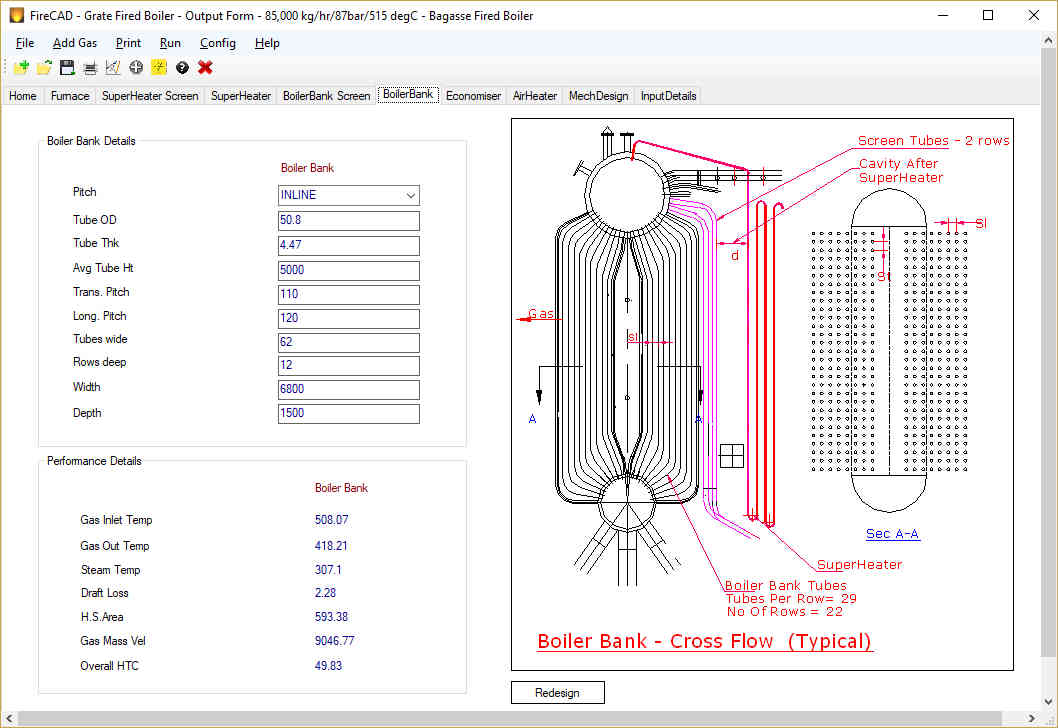Grate Fired Boilers: An Overview
Introduction
Grate fired boilers, also known as Grate Fired Steam Generators or Stoker Fired Boilers, represent a prominent technology in the combustion of solid fuels. These systems feature a grate where solid fuels are ignited, either within the furnace or externally in the case of external furnace boilers. Operating under a balanced draft, these boilers maintain a slightly negative pressure within the furnace for optimal performance.
Configuration
Grate fired steam generators are composed of several integral components, including the furnace, superheater, boiler bank, economizer, and air heater. Primarily designed as water tube boilers, they may feature a fire tube boiler bank in combination boiler configurations.
Grate Design
Solid fuels such as coal and biomass are introduced into the furnace via mechanical or pneumatic feeders, where they are spread across the grate. As combustion occurs on the firing grate, heat is generated, with some fuel igniting immediately upon entering the furnace—a process known as suspension firing. The heat produced is then utilized in various boiler heat transfer sections to convert water into steam. Selecting an appropriate grate is crucial and depends on the fuel type and its specific characteristics. Common grate configurations include:
- Travelling Grate: Ideal for high ash-content fuels and medium-range boilers.
- Dumping Grate: Suited for low to medium capacity boilers using low ash-content fuels such as bagasse.
Furnace Design
Typically vertical and water tube in design, the furnace consists of either membrane walls, tangent tube walls, or space tube configurations. The furnace absorbs a significant portion of the heat generated during combustion through radiation, ensuring complete fuel combustion by allowing adequate residence time. Key furnace components include bottom and top headers, constructed from carbon steel, which connect to water wall tubes for heat absorption. The furnace integrates provisions for secondary air supply and fuel feeders, and headers connect to downcomer pipes leading from the lower to the upper drum. This system facilitates the circulation of water and steam, characterized by a circulation ratio—typically ranging from 15 to 25 in natural circulation boilers, and lower in forced circulation systems used for high-pressure applications.
Boiler Bank
The boiler bank is designed to absorb heat from hot gases through convection and is typically robust to handle lower temperature heat absorption. Most grate fired boilers feature a bi-drum construction, where the lower drum is filled with water and the upper drum contains a mix of steam and water. Constructed from carbon steel, these drums are interconnected by numerous tubes, maximizing heat transfer efficiency. Single drum designs are increasingly favored to circumvent the complexities associated with traditional boiler banks, often equipped with rotary soot blowers for maintaining efficiency.
Superheater
As a critical component, the superheater is responsible for enhancing steam temperature and quality. It absorbs heat through direct radiation and convection from the furnace, often protected by a furnace nose. Platten type superheaters may be suspended directly in the furnace for increased heat absorption. Featuring inlet and outlet headers connected to superheater coils, these units often include inter-stage desuperheaters or attemperators for precise temperature control. The materials used in superheater construction vary based on operational temperatures, typically employing carbon steel or low-alloy materials, and incorporating retractable steam or sonic soot blowers.
Economizer
Positioned downstream of the boiler bank, the economizer preheats feed water by capturing residual heat from exhaust gases. Primarily composed of water tubes, economizers maximize efficiency and can be retrofitted to existing systems. They can elevate feed water temperatures to within 20-30°C below the boiler’s saturation point. To minimize corrosive gas condensation, economizers require an inlet water temperature ranging from 80°C to 150°C, depending on the sulfur content in the fuel used.
Air Heater
The air heater’s role is to preheat combustion air before it enters the furnace, recovering heat from exhaust gases to reduce outlet temperatures to between 130°C and 170°C. Preheated air, typically ranging from 150°C to 220°C, enhances combustion efficiency, especially for fuels with inherent moisture content, such as bagasse.
Boiler Components
Key components of a grate fired boiler system include:
- Furnace: The combustion chamber.
- Superheater: Increases steam temperature.
- Boiler Bank: Facilitates heat absorption from flue gases.
- Economizer: Preheats feed water.
- Air Heater: Prepares combustion air.
- Steam and Water Drums: Manage fluid circulation.
The fuel feeding system encompasses fuel storage solutions, including silos or bunkers, along with various feeder types—rotary, reciprocating, or pneumatic, alongside the grate and ash discharge mechanisms.
Grate fired boilers are engineered for efficiency and robustness, making them a reliable choice for various industrial applications requiring solid fuel combustion.






